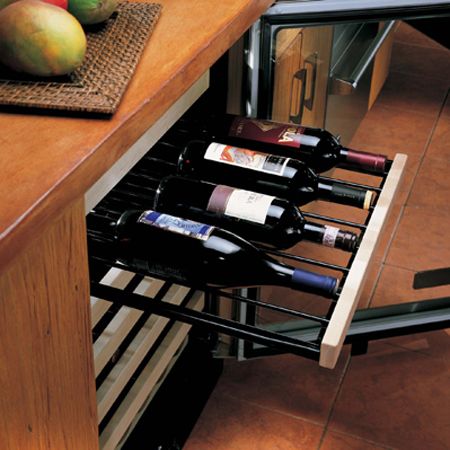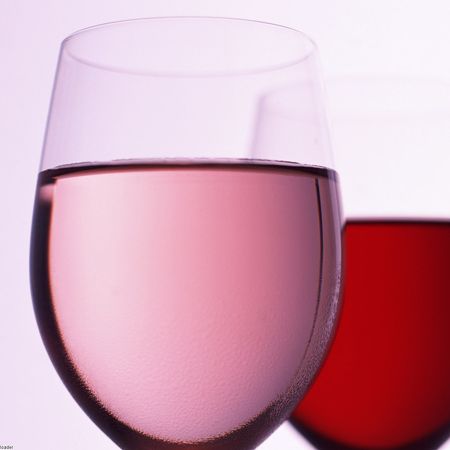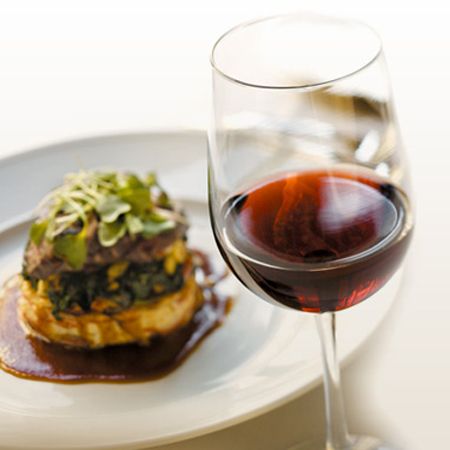Wines for the Holiday Dinner

As we approach the holiday season and begin reading the articles in the food magazines and Web sites about the feasible feasts we can offer our families and friends, we are confronted with the issue of wines to be served. For Americans, it is, frankly, a fairly recent development that we give much thought to wines that will work well with a traditional holiday meal.
As the range of preparations for turkey, in particular, has expanded, along with the integration of wine into America’s culinary routine, the wealth of wine choices for such occasions has grown. The days of serving chardonnay to those who happen to voice interest in something other than water or iced tea to drink with the basic roast turkey seem rather pedestrian today. The dining sophistication of Americans has experienced a rapid transition.
Nevertheless, holiday dinners have largely, and thankfully, retained their traditional themes of warm and joyful celebration of the values, beliefs, and people that provide rich meaning to our lives. They are not events for stressing out over the perfect wine, and, fortunately, it’s not difficult to find a wine that will enhance the food and conviviality at the table. A holiday meal is a festive occasion and warrants a lively wine that supports the meal, rather than being central to it; it is about people and hearty food, not fine analysis.
With this as a guiding principle, an indispensable wine is Champagne (a name I will use herein, for convenience, to include sparkling wines from California and the Cava of Northern Spain). The beauty and refreshing effervescence of Champagne is the ideal catalyst for a festive atmosphere. While most people still consider it to be an aperitif, Champagne, better than almost any wine, can hold its own with most cuisines, while promoting the flavors and textures of the food with which it is paired.
This makes it ideal for an array of hors d’oeuvres beforehand, but one should seriously consider serving Champagne with the meal itself. The turkey, chicken, or goose, whether simply roasted, infused with herbs, or smoked, will find a delightful counterpoint in this zesty wine. Moreover, its brilliant presence has an illuminating effect on the table setting throughout the affair, conveying the sense of celebration through to the end.
If Champagne is chosen for the dinner, or even if not, a splendid choice for an aperitif is a high-quality dry sherry, served quite cold. For those with little experience in drinking sherry, this is not the sweet or gasoline-like sherry that was pervasive in afternoon bridge clubs in the ‘60s, where it justifiably acquired a terrible reputation. A fino or manzanilla sherry from Emilio Lustau, Pedro Domecq, or Hidalgo will provide an elegant and stimulating starter. This is the wine of Andalucia that is served throughout the evening’s series of tapas dishes, and it will pair beautifully with almost any hors d’oeuvres. Fine sherry is increasingly available throughout the U.S. for less than $25 per bottle and is well worth searching for. As the saying goes, just do it.
Let’s turn to the main meal and explore some alternatives to Champagne. Regardless how the bird is prepared, a superb companion is a dry riesling from Alsace (Trimbach, Weinbach, Bott-Geyl, or splurge with Zind-Humbrecht) or Germany (Meulenhof, JJ Christoffel, Leitz, Selbach-Oster, Kerpen or, slightly pricier but worth it, JJ Prum). The riesling possesses the refreshing acidity to offset the richness of the dressing, potatoes, and sauces, while tempering the sharpness of cranberries or relishes. At the same time, the luscious fruit flavors of the wine will enliven the entire meal. Riesling is perhaps the least-appreciated great white wine in the world and one of the most versatile, standing up even to a sweet dish like a sweet potato casserole or soufflé. Sweet flavors in food are the major foil of most white wines, rendering acidic wines like sauvignon blanc or pinot grigio very tart and flavorless.
Notwithstanding this last point, a sauvignon blanc is generally a good, reliable partner for poultry and somewhat heavy side dishes. It is light-bodied, with zesty citrus and herbal flavors and, like the riesling, has a bracing acidity that cleans the palate in preparation for the next morsel. There are many very good sauvignon blancs in the market for less than $25 from California, New Zealand, and the villages of Sancerre and Pouilly Fume’ in France. If you desire for the wine to play a more prominent role in the meal, look for the more expensive, but spectacular wines of Cotat (Francois or Pascal, cousins) or Didier Dagueneau, arguably the greatest sauvignon blancs in the world.
If you like a more voluptuous style of white, seek out a viognier or roussanne from California’s Central Coast region. These varietals, traditionally produced in the Rhone Valley, have a rich, even oily, texture, with peach, melon, or tropical fruit flavors, a nice balance of acid, and a bit of bitterness on the finish that is utterly refreshing. Several producers in California (Alban, Tensley, Garretson, Qupe, Tablas Creek) are making excellent Rhone varietals. These can be particularly sumptuous with smoked turkey or with goose.
For those who prefer a red wine, I would suggest a pinot noir from Burgundy or Oregon. The pinot needs to be lighter-bodied and crisper than most of those coming from California to keep from overwhelming the food.
Another excellent wine which should be considered as a choice for those who want something other than a white is a superb rosé produced by Jeff Morgan in California under the SoloRosa label. This is seriously good wine made from sangiovese and merlot grapes, with a refreshing texture and red berry flavor profile which would go brilliantly with the meal. Its gorgeous color is almost as appealing as its taste.
There is much to choose from in the above recommendations, and there is so much excellent wine being made today, unquestionably more than ever before, that you should enter the holidays with total confidence that this year a great feast will be made even better by the wine supporting it. And best of all, it will contribute enormously to the warm camaraderie of the occasion.
RECENT POSTS IN Food and Wine Articles


